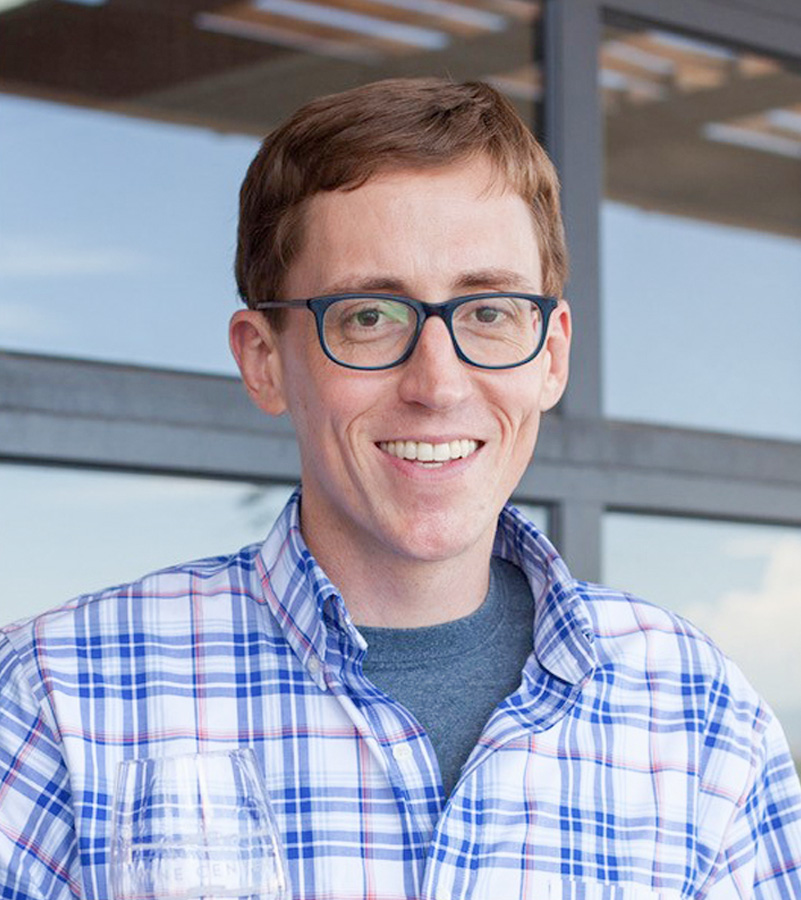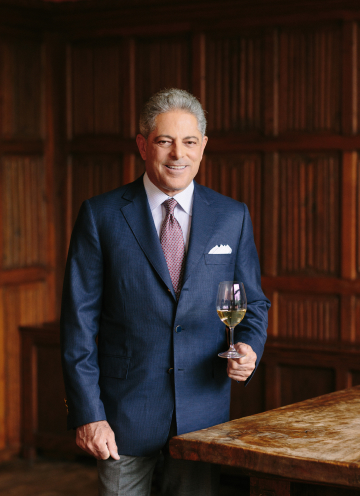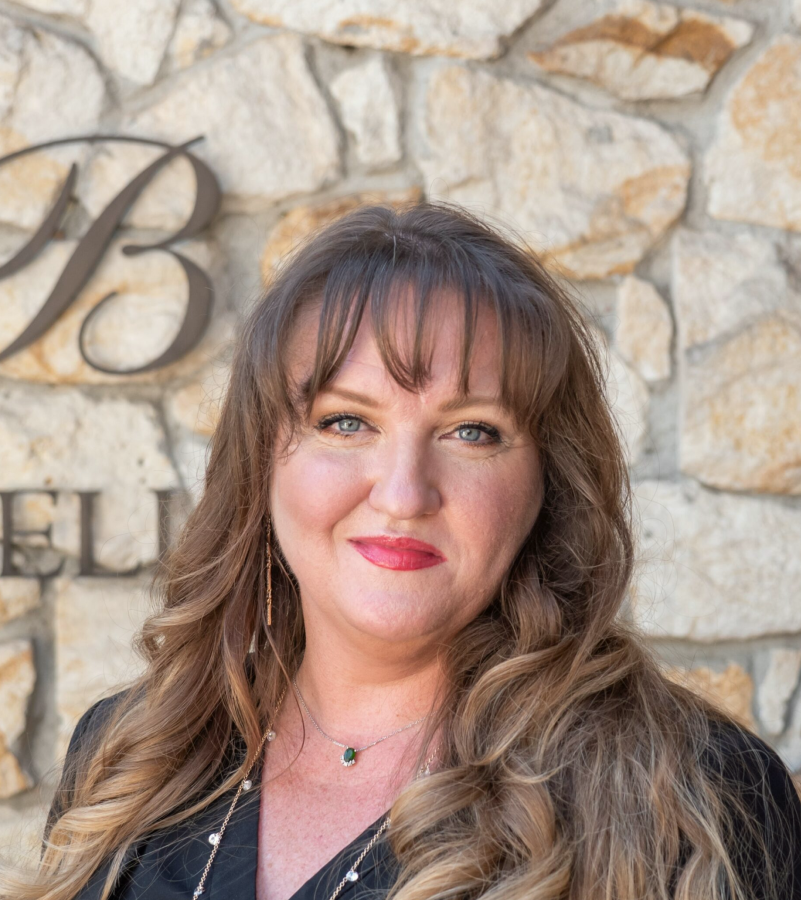"When we think of the success of a brand, we make decisions allowing success to be measured in decades, not in years or even quarters."
To begin with, could you please give us a brief introduction to Yavapai College and the Southwest Wine Center?
Well, I’ll talk about the Southwest Wine Center because that’s what I know the most about. So we have a two-year degree. We have an associate degree, and we also have a one-year certificate in viticulture and a one-year certificate in enology. So the science of growing grapes and then the science of winemaking.
Our average age of student is 50, used to be 48, but it’s 50 years old. So I think that’s an important point there. On campus, we have 13 acres of mature, active acres of Vitis viniferous, and we grow European wine grapes.
We have a 2,000 case production facility. So we have an active winery. That’s a working model that we use as a teaching lab, and we’re completely transparent on things like the cost of farming, site selection, varietal selection, and different management practices. We try and have a very diverse portfolio of wines that way. Students can get exposure to a lot of different approaches to winemaking.
And then the capstone class of the program is a business and compliance class, anything to do with alcohol. Of course, now you have taxes involved. You have licensing. And we’re able to kind of showcase what we do at the wine center. Just as a frame of reference, students can see what the cost to get sold or how much it takes to produce a bottle of wine. What the different markets are, you know there’s wholesale. So, the winery is selling to some sort of retailer. There’s retail, so we can be a tasting room and sell directly to consumers, and then we can do wine clubs and wine shipments, which is pretty nice. So the wine center operates in all three of those different tiers. And each of those 3 tiers has a different price point and different margins of return.
Those are some of the things that are the most eye-opening pieces for the business. Students come in and they know they’re going to be learning about growing grapes, and, you know, cultivating the vines and how to take care of weeds, how to pick barrels. They know they’re going to get that. But it’s usually kind of the business, and starting to see, from an industry perspective, how the wine industry works. That really opens their eyes to what their future could look like.
A lot of our students take the program for personal interest because it’s fun. They were turned on by wine, and they wanted to know more. We have a lot of husbands or wives, fathers, daughters, or pairs of people taking it together, and many of them want to be entrepreneurs. So they’re kind of setting themselves up to start their own businesses.
Because those are the people we attract, we have focused our classes to best support them with evening and weekend classes. These are adults who work full time, so we try and do what we call grape camps, which are two or three-day weekends. So every eight weeks, they come to campus, and they’re here for extensive stuff. But in between those periods, they’re learning online.
Understood. If I were a future student, perhaps I would choose to start with the enology program, just as a way to get introduced to wine culture, and then perhaps continue with everything. You know, I feel like producing myself, maybe in a small piece of land back home and then ending up actually with the entrepreneurship program. Would that be a path for potential students?
It could be. We try and be flexible there. The way the program’s designed, it’s a year-long program in viticulture. And then a year-long program in enology. So we have them start in the fall, and they see the full growing cycle, and then they end the next summer, where they see the grapes that they grew. So that way, they get the full cycle, and then they would go into the winery, and they’d get the full cycle of making the wines from harvest all the way to bottling.
So what I find is that some students will come to us thinking that one of those parts really speaks to them. They like gardening, let’s say, and they really like working with the earth, and they think I’m just going to do the bit of culture. And then as soon as they get into the program, they realize, like, I want to do both parts of this program. I want to do the enology and learn about winemaking. And I want to do grape growing.
A good winemaker will have a solid understanding of some culture. Even if they’re not a vineyard manager by trade, they need to understand all those things. So, yes, we have it, so people can just take little pieces and kind of chip away at it. But I find that our students like to come back and take all of it over time because they’re working. Even though it’s a two-year program, it might take them three or four years to complete. And that’s okay. We’re not in a hurry to rush them out of here and winemaking just takes time.
Could you talk a little bit more about the research component of the institution?
Sure. We have 13 different varieties and 13 acres. We also have multiple rootstocks. We’re trying to find which rootstock does well in arid environments. So we are doing deficit irrigation. We’re very intentionally monitoring the water and not applying too much water because we’re trying to make the best of every single drop.
We also happen to be on effluent water. So we’re on agricultural grade, effluent water. So it’s grey water after the municipality uses it, and they process it. We’re able to then grow on that. So we’re really proud that we’re able to showcase that reuse of water, and we’re not taking an extra pull from the aquifer. So we don’t have a well, we’re not using the domestic source. We’re using the water that, you know, our communities are trying to get rid of. So we’re able to showcase to people what that water does to the soil.
And then likewise, kind of on the varietal range, we’re able to showcase to people what varieties do well in this climate because we’re still a pretty new industry. So not only do we have to figure out what grows well, but we also have to figure out what the market wants. What do people want to buy from Arizona? Napa Valley’s figured that out. You know. people want Napa Valley Cabernet 7. They know that in Sonoma, they grow Pinot noir. So we’re able to showcase these different varieties from this new place so people can get a sense of it. But we can also get a sense of what the customers respond to.
Understood. And I wanted to ask you a little bit more about sustainability. You explained how to do winemaking with sustainable practices, low impact on the soil and so on. Will you tell us a little bit more about the new methods for those who want perhaps to change their methodologies?
Yeah. Well, the drip irrigation and the deficit irrigation are big ones. So we can minimize the amount of water we need. The other thing that’s really helped is a cover crop and trying to mow and establish cover crops because we want to get as much population of the of the water as we can. And we’re also finding that it helps regenerate the soil. So, a big part of regenerative agriculture is building up that microbiome by having more organic material in it.
When we first started, we wanted to do what everybody does, which is control the weeds, however that may be. It could be ripping. It could be herbicide. And what we found was that we were eroding our top soil. So now, by establishing grasses and native cover crops, we mow it, get better percolation back into the soil, and we’re seeing that the organic material is starting to rebuild. So I think that’s probably the most powerful thing we’ve done.
Also, it’s pouring rain right now. I don’t know if you’ve heard about all the floods they’ve had in California the last two days. But that’s made its way over to Arizona. So that’s on top of us right now. And we found that having those cover crops keeps us from having just nothing but mud in the vineyard. So we’re able to still get out there and keep working. So truly, that regenerative agriculture, that topsoil, is very powerful, and also it limits the amount of nutrients we need to put back into the soil. So, we try to minimize how much inorganic fertilizer we put out there.
So, if we’re able to—and actually, we’re starting to reintroduce pumice. The pumice is the press material. You take grapes to the press, you press them, and you’ve got that organic material left over. We’re taking that pumice and reintroducing it back out into the vineyard just as a way to help replenish the soil from what we’re taking from it.
So we’re trying to take a holistic approach as best we can. Okay, I’m really proud of how much we’ve been able to cut back on some of those pesticides, especially traditional farming pesticides. We’ve almost been able to eliminate them—not completely, but we’ve been able to cut back big time.
And how will you say this actually affects the final end product?
Well, healthier grape vines make healthier grapes, make better chemistry in the wine. So if the vines are able to photosynthesize and be able to ward off any sort of fungal pressure, any sort of insect pressure, it’s going to create grapes with good chemistry. So we want to grow all of the chemistry that’s in the wine bottle.
We developed that in the vineyard. We don’t want to augment, so we grow good grapes with good pH and good sugar. The only thing we do in the cellar is use microbiology to take the grapes and turn them into wine, which is great chemistry out of the vineyard. We’re able to make terrific wine that really has very minimal intervention, which is something that’s important now to the market, especially with the younger generations. They talk about natural wines and wines that haven’t been augmented with different acids or sugar or any of that, and we’re able to avoid having to do any of those because we can get good chemistry in the vineyard
Understood. And what will be your key message for potential students?
The wine industry is hard work, but it is something that is a passion project. So if you want to love what you do, if you want to create something, if you want to work with the earth, it is everything that the world is. The world’s becoming something with digital, our digital lives. We’re always on the computer. We’re always on our phone. And the wine industry is this stable thing that we’ve done for thousands of years, and it’s kind of a return back to a craft.
That’s a really good question, and I’m trying to answer it. Well, it’s a return to this craft that we’ve done for thousands of years. It’s been around for a long time, and the methods that we teach you are traditional methods that have made great wines and have excited people about winemaking for literally thousands of years.
Winemaking is not about the wine and the alcohol product. It’s about a culture. So as soon as the wine comes into a place, you have food. Either you’ve got tourism, you’ve got economic development.
So wine is not any one thing. I’ll also say that people might think, well, I don’t want to be a vineyard manager or a winemaker. In the wine industry, you can be all sorts of things. You could take your law degree and be in legal, in compliance. You could take your marketing degree and help market in the wine industry. You could have an Airbnb Bed and Breakfast where you’re having people come, and you’re cooking them food. And it’s in wine country.
So don’t think wine is a simple thing. It’s actually a very complex thing. And there are a lot of components in the wine industry. And that’s what the Southwest Wine Center wants, to be at the middle of that, and help all of those different facets. So it’s not just grape growing and winemaking.
And what would be the vision that you have for Southwest Wine Center, let’s say, in the next 3 to 5 years? Where do you see the center going?
We want to continue to support the industry as it evolves. New demographics are turning into wine consumers. We call them millennials and Gen Z’s. I’m not sure what you guys call them, but some are younger than the baby boomers. Do you guys use those terms?
Yes, yes.
Okay. Not our parents. Right now, it’s our parents who buy all the wines, and I think it’s important that we’re part of that evolution to support what the younger generations are looking for. And a lot of those younger generations want experiences. You can buy good wine all over the place. It’s all over the place, but can you get that experience and that connection to a place. I think the Southwest Wine Center can help showcase some of that. Then, the graduates who leave there can also understand that it’s not just about that glass of wine. It’s about telling the story and connecting people back to this idea of community and culture.
Understood. We have had a wonderful interview. I don’t have any more questions for you, but I would like to ask: Is there anything that I haven’t asked you about that you would like to mention as well?
This is something we hear all the time. People are surprised about Arizona wine, which is crazy to me because I’ve been making Arizona wine for 14 years now. We have everything we need to make good wine. We’ve got good soil. We’ve got good sunshine. Wine grapes like a nice, dry and warm climate, and those are what we have.
People think Arizona wine is like Wiley Coyote, where it’s just hot, hot desert and the saguaro cactus. We’re up at a high elevation, so we get cold nights right now. It’s going to start snowing here any minute. So people don’t realize how diverse Arizona is in geography, and we use that geographic diversity to create really good wines. And soon people won’t be as surprised about it. They just assume that well, it’s got to be growing in California or something, or else it’s no good. It’s almost like Arizona’s the best-kept secret.
Okay. Fantastic. And what would you like to accomplish with this piece? What would be your main focus?
Always more knowledge about what we do and, ultimately, more students who want to enroll. But I think we just make them aware of the wine center because we are open to the public. We have a tasting room where people can come. So even if they don’t sign up for classes, they can come here and visit. So I just think more awareness overall.



















